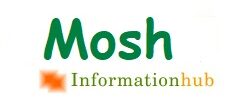Accounts Receivable Optimization for Enhanced Efficiency in Management

In the intricate dance of business finance, managing your accounts receivable with greater efficiency is a crucial step towards maintaining a healthy cash flow.
As a business owner, navigating the complexities of invoicing, late payments, and client relationships can be challenging but mastering these elements is key to financial success.
What is Accounts Receivable
Accounts receivable encompass the funds owed to your business by clients or customers for goods or services provided.
It’s essentially the money that is yet to be collected but plays a pivotal role in your company’s cash flow.
Challenges in Managing Accounts Receivable
The journey to efficient account receivable management is not without obstacles.
Late payments, inefficient invoicing processes, and communication gaps can hinder the smooth operation of your financial systems.
Benefits of Efficient Accounts Receivable Management
Efficient management, on the other hand, brings a cascade of benefits.
It not only improves cash flow but also strengthens client relationships and reduces financial risks, creating a more robust financial foundation for your business.
Implementing Effective Invoicing Systems
Streamlining the invoicing process is a fundamental step.
Utilizing modern invoicing software can simplify the entire procedure, ensuring accuracy and timeliness in your financial transactions.
Setting Clear Payment Terms
Clearly defining payment expectations and negotiating favorable terms with clients contribute to a smoother financial operation.
This transparency helps in establishing trust and mutual understanding.
Establishing a Follow-Up System
A strategic follow-up system is paramount. Regularly tracking outstanding invoices and sending reminders at the right intervals can significantly reduce late payments.
Leveraging Technology for Collections
Automation tools for collections and the integration of payment gateways streamline the entire collection process.
This not only saves time but also reduces the margin for errors.
Effective Communication with Clients
Open lines of communication are the lifeblood of efficient account receivable management.
Addressing client concerns promptly and being proactive in communication can foster a positive working relationship.
Analyzing and Adjusting Credit Policies
Regular assessment of credit policies is essential. Adjustments based on client history and current market conditions ensure that your credit policies remain effective and in line with business goals.
Building Strong Client Relationships
Personalized interactions go a long way. By understanding your clients’ needs and addressing them proactively, you not only enhance client satisfaction but also create a foundation for long-term collaboration.
Training and Educating Your Team
Ensuring that your team members understand the intricacies of accounts receivable processes is crucial.
Furthermore, continuous training keeps them abreast of the latest industry trends and encourages improvement.
Utilizing Financial Forecasting
Predicting future cash flow through financial forecasting allows for more informed decision-making.
However, it helps you anticipate financial needs and strategically plan for the future.
Regularly Reviewing Accounts Receivable Aging Reports
Regular reviews of accounts receivable aging reports provide valuable insights.
Identifying trends and issues early on allows for timely corrective actions, preventing potential financial hiccups.
Conclusion on Managing your Accounts Receivable
In conclusion, managing your accounts receivable with greater efficiency is not just a financial strategy but a cornerstone of your business’s success.
By navigating challenges, implementing effective systems, and fostering strong client relationships, you can build a robust financial framework that propels your business forward.
FAQs on Managing your Accounts Receivable
How often should I review my accounts receivable aging reports?
Regular reviews, preferably monthly, allow for timely identification of issues.
What role does technology play in accounts receivable management?
Technology automates processes, reduces errors, and expedites collections.
How can I negotiate favorable payment terms with clients?
Clearly communicate your expectations and be open to negotiation based on mutual benefits.
Is financial forecasting necessary for small businesses?
Yes, financial forecasting helps small businesses plan for future financial needs and challenges.
What steps can I take to address late payments from clients?
Implement a strategic follow-up system and communicate openly with clients to address any issues promptly.




